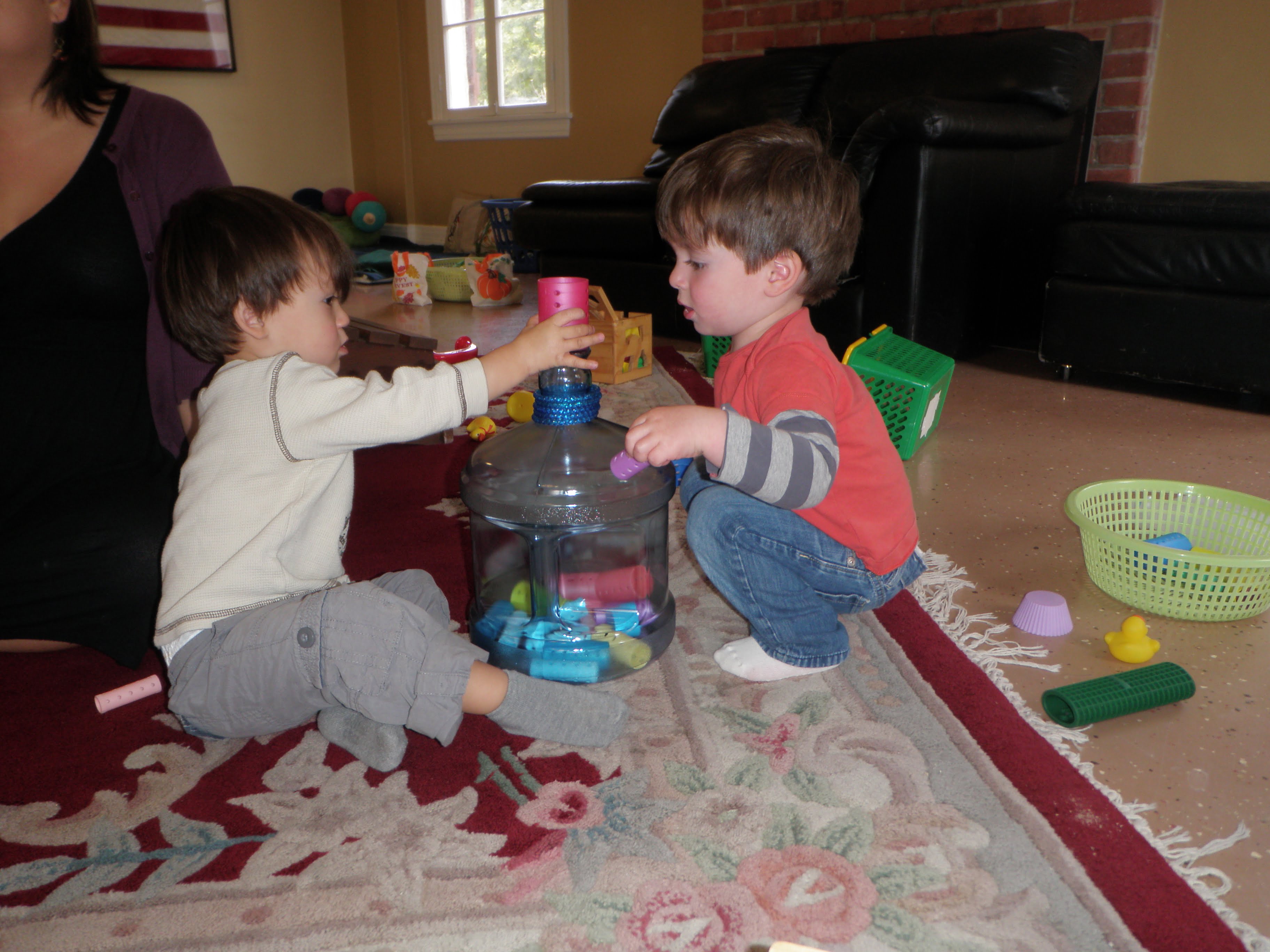Honestly, I’ve never been good at tolerating a struggle neither my own nor a child’s. In fact, I didn’t even realize I needed to make an effort to tolerate it.
When a child began showing signs of discomfort, my instinct was to help and fix the issue as fast as I could. However, from the Educaring Approach, I learned that struggle isn’t a bad thing. It took me some time to embrace this idea.
Young children often cry to communicate their feelings, experiences, and needs to us and the world. It can be difficult for many adults to hear a young child cry.
Yet, as Magda Gerber said, “Crying isn’t the cause of pain; it’s the release of pain.”
Sitting on the floor – letting it be
Yesterday, we sat on the floor in my RIE Parent-Infant Guidance class, observing six young toddlers as they explored the room, toys, climbing equipment, and interacted with each other. One boy, Sam, seemed uncomfortable. He moved closer to his mom but couldn’t get comfortable. I tried to observe more to figure out what was going on. At that moment, Sam’s mom got up and put her sunglasses away – Sam wanted them. She looked at me and asked, “I shouldn’t give the sunglasses to him?”
I talked to Sam, saying, “You found mom’s sunglasses. She put them away in her bag to keep them safe. It looks like you want to hold on to the sunglasses. ” Sam continued to express his unhappiness about the sunglasses and perhaps other things we didn’t quite understand yet. Sam’s nanny started rolling a small car, which briefly distracted Sam. I noticed that this would have been my first instinct as well. Sam’s mom asked me, “If giving him the sunglasses or distracting him isn’t a good idea, what should we have done instead? This situation has happened before, and I want to know. We’re not supposed to ignore it, right?”
The mother is correct. We want to respond, not ignore it or give in. We aim to allow struggle, discomfort, and sometimes tears. Let the moment be. Also, we can empathize and acknowledge the child’s feelings: “You want my sunglasses, and I put them away…” When we tolerate the discomfort, we send a message that different feelings are okay. We don’t have to brush those feelings under the rug and distract ourselves with something pleasant. Let feelings be! Let the moment be.
Time to go home …
Today, in my online RIE Parent Guidance class, we had a great conversation with parents about preparing toddlers for transitions and respecting their points of view. Young children want to know where they’re going, need to know ahead of time, and want to know when you’ll have time to spend with them and play. One parent asked, “What if I inform my child that we need to go home soon? I slowly collect all the toys and ask her what the last thing she wants to do on the playground. In the meantime, she’s still not ready to go home. Is that possible?” Absolutely! “And what should I do?” You may need to let her know and then pick her up and take her to the car. Most importantly, you don’t need to cheer her up, distract her, or scowl at her for her lack of cooperation. Let her feelings be. Empathize not with her actions but with her feelings: “Oh, wow, you had so much fun in the park, and you don’t want to go…” Tolerate the discomfort and tears. It’s tough, but you are her anchor.
After everyone is calm and comfortable, you can talk more about the situation to help the child process what happened and what she felt. Letting moment be – tolerating struggle is a huge gift you can offer to your child.
Being held
A mother with a young baby attended my RIE Parent-Infant Guidance class. Amy, her baby, kept making unsettling sounds. Kate, the mother, observed Amy trying to get comfortable. Eventually, she picked Amy up gently. Offering Amy some milk didn’t seem to help, indicating that hunger wasn’t the issue. Slowly, Kate brought Amy to the rug. Amy wasn’t crying but kept signaling some struggle. After a few minutes, Kate tried holding Amy for comfort. She repeated this, alternating offering Amy space to move on the rug and then holding Amy. Then Kate made an observation, saying, “Even though Amy seems unhappy and unsettled now, she appears more comfortable on the rug than in my arms.” We both realized that all we could do was tolerate Amy’s struggle, being there for her, without necessarily trying to stop or distract her from it. I admired Kate’s ability to keenly observe Amy’s needs without imposing her own expectations on how to handle the situation.
In conclusion, the key theme in these scenarios is the importance of understanding and accepting children’s emotions and allowing them to express their feelings without rushing to fix or control the situation. Trusting in the natural process of emotions and validating their feelings is vital for building strong connections with children and helping them navigate challenging moments.
Photo credit: Michail Bibichkov
Let me know if you need more information about RIE® Parent-Infant Guidance™ Classes.
Wishing you all the best in this difficult yet exciting journey of parenting!
Warmly,
Teacher Kira














